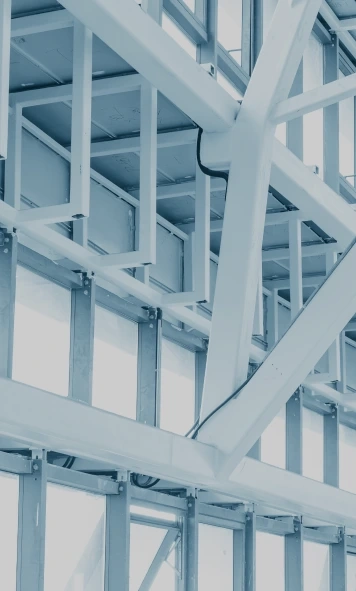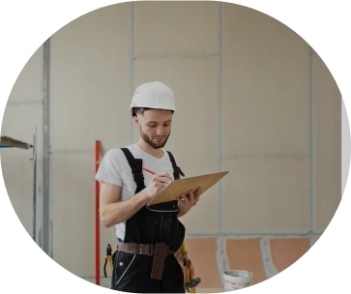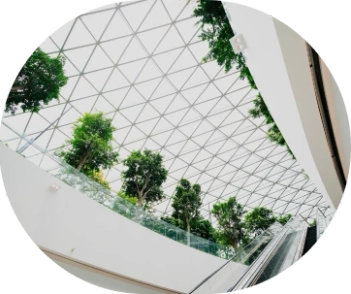Intumescent paint has revolutionized the way we approach fire protection in buildings. With its ability to expand when exposed to high heat and flames, forming a protective char that insulates the underlying surfaces, intumescent paint is a powerful tool in achieving 2-hour fire ratings.
When it comes to safeguarding designs and ensuring the safety of building occupants, Intumescent paint is a game-changer. It provides a passive fire protection system that is both highly effective and aesthetically appealing. With its thin film application, intumescent paint seamlessly blends into the existing architecture, giving architects and designers the freedom to create beautiful spaces without compromising on safety.
In this article, we will delve into the power of intumescent paint in achieving 2-hour fire ratings. We will explore its various applications, delve into the science behind its fire-resistant properties, and discuss its benefits for building owners and occupants.
Whether you are a contractor, architect, or engineer with a professional interest in fire safety design, this article will unveil the potential of intumescent paint to protect lives and property in the event of a fire. It's crucial to stay updated on the latest developments, application insights, and regulations surrounding this technology.
In this comprehensive guide, we'll address key questions and topics related to intumescent paint.

Table of contents
- •What is intumescent paint?
- ◦Definition and Function of Intumescent Paint
- ◦How Does It Work to Protect Surfaces from Fire and Heat
- •Types of Surfaces Suitable for Intumescent Paint
- ◦Applicability of Fireproof Paint to Diverse Materials
- ◦Surface Preparation Requirements for Intumescent Paint
- •Determining fire resistance ratings of intumescent paint
- ◦Testing Procedures to Evaluate Fire Resistance
- •Application process of intumescent paint
- ◦Recommended Application Method – Airless Paint Sprayer
- •Considerations of substrate and environment when choosing intumescent paint
- •Understanding fire ratings and regulations
- •Maintenance and inspection of intumescent paint
- •Advantages of using intumescent paint for fire protection
- •Factors influencing the cost of intumescent paint applications
- •Environmental impact of intumescent paint
- •Conclusion: Harnessing the power of intumescent paint for fire safety
- •Our solution
Intumescent paint is a passive fire protection solution. Intumescent paints operate as a protective coating for vulnerable and flammable substrates. The intumescent coating is activated by heat and fire. In its deactivated form it resembles a smooth coat not unlike any other household paint.
The function of intumescent paint is to provide sufficient fireproofing for the components of a building, and tends to offer about 1-2 hours of protection depending on the substrate at hand.
The primary goal of such coatings is to stave off the spread of a building fire to allow building occupants time for evacuation, as well as to protect the structural integrity of buildings during such emergencies.
These coatings allow fire safety professionals more time to extinguish a fire and help to save lives and prevent extensive building damages during fire related disasters.
Intumescent paint systems consist of several layers, each with a specific function. The base layer acts as a primer, providing adhesion to the substrate. The intermediate layer, the intumescent, contains the reactive components that expand when exposed to heat. Finally, the topcoat layer provides additional protection and ensures the paint’s durability.
To understand how intumescent paint works, it’s important to grasp the science behind its fire-retardant properties. Intumescent paint is a specialized coating that reacts to high heat by expanding and forming a foam-like char. This char acts as an insulating layer, protecting the underlying substrate from the heat of the fire.
The expansion of intumescent paint is triggered when it reaches a certain temperature, typically around 350-400 degrees Farenheit. As the temperature rises, the paint expands to create a thick, insulating layer of char that slows down the transfer of heat to the substrate beneath.
The delay in heat transfer resulting from the intumescent proves crucial in the context of extinguishing the fire and saving the lives of both building occupants and emergency responders.

Intumescent paint is compatible with a diverse array of materials, including steel, wood, drywall, FRP, and concrete, among others.
However specifications revolving around the amount of protection offered as well as application requirements may range. As such it is vital to be informed and not assume that an intumescent paint operates on a “one size fits all” basis.
During application of an intumescent paint pay close attention to the data specifications. Always talk to technical support specialists if there are any questions or doubts regarding the application process.
Proper surface preparation is critical to achieving adhesion of an intumescent coating on a substrate. Prior to application the surface must be properly cleaned, and all stray particulate matter should be removed, similarly any old and flaking paint must be stripped. In some cases, a pull test may be performed in the field to verify the integrity of any existing coatings.
Removing Existing Coatings to Prepare for Intumescent Paint Application
| Method | Note | Disclaimer |
|---|---|---|
| Paint Stripper | Brush it on an existing painted surface and wait for the old layer to dissolve | With this and all other methods, wear appropriate PPE. |
| Coarse Paper | Abrade the existing layer of paint with coarse paper | Be careful not to damage the substrate underneath |
| Hot Air Gun | Good for removing paints and varnishes | Keep heat away from flammable materials |
| Mechanical Abrasion | Via coarse paper, belt, or disk sander | Be careful not to damage the substrate underneath |
| Sand Blasting | Returns substrate to original condition | Often performed by professional |
It is important to note that many substrates necessitate the use of a primer for proper application and adhesion to the substrate. Applications over steel require a primer, while applications over drywall typically do not. For applications over wood, a primer is not required, but is usually recommended. Consult a technician, or product data sheets, for guidance on appropriate primers.
Meeting fire resistance ratings in fire safety design is critical as a fire-resistance rating describes the amount of time a substrate can maintain structural integrity under dire conditions. The fire resistance rating of an intumescent paint subsequently determines how much additional protection is provided by a protective coating.
The most common fire resistance ratings in terms of intumescent paint are ASTM E84 and ASTM E119, with their respective UL counterparts, UL 723 and UL 263.
ASTM E84 (UL 723) is a test method that measures surface burning characteristics, aka flame spread in an active fire and smoke development. Following this test, the product will receive a classification based on performance.
These metrics are further specified in the table below.
| Class | Flame Spread | Smoke index |
|---|---|---|
| A | 0 - 25 | 0 - 450 |
| B | 26 - 75 | 0 - 450 |
| C | 76 - 200 | 0 - 450 |
There is also an extended version of the ASTM E84 called the ASTM E2768.
This test is a prolonged version of the ASTM E84, testing the same criteria (flame spread and smoke development) but it lasts 30 minutes long, whereas ASTM E84 is a burn test with a much shorter duration, the standard lasting 10 minutes.
Meanwhile, ASTM E119 (UL263) tests the fire resistance of an assembly in a burn that lasts 1-2 hours. Throughout the span of the test it is determined whether a material contains a fire and/or preserves structural integrity.
Fire resistance of a building material is typically measured as it is put under fire within a large testing furnace, with performance assessed based on necessary criteria outlined by specific testing standards.
For example, a test burn may assess whether or not structural integrity was preserved, a load maintained, or a temperature transfer limited through a material or assembly. Pass/Fail criteria differs depending upon assembly type, substrate, testing goals, etc., and subsequent classifications and ratings are dependent on the results of said test.
For an intumescent coating, the coating is applied to a constructed test sample/assembly and allowed to cure for an extended period of time before it is placed in the furnace, and similar characteristics are observed depending on the type of test.
We can often directly measure the performance of the intumescent coating by comparing it to the performance of the unprotected substrate. However, it is the performance of the system as a whole that is most important!

The application process of intumescent paint requires careful planning and execution to ensure its effectiveness. It typically involves several steps, including surface preparation, primer application, intumescent coating application, and topcoat application.
Surface preparation is crucial to ensure proper adhesion of the paint to the substrate. The surface must be clean, dry, and free from any contaminants that could hinder adhesion. Depending on the substrate, surface preparation may involve sanding, cleaning with solvents, or applying a primer.
Once the surface is prepared, a primer should be applied when coating steel, and is recommended for other substrates to enhance adhesion and promote better coverage of the intumescent paint. The primer must be compatible with both the substrate and the intumescent coating to ensure a strong bond.
After the primer has dried, the intumescent coating is applied. The thickness of the coating and the number of layers may vary depending on the desired fire rating and the manufacturer’s instructions. It’s important to follow the recommended application guidelines to ensure the paint’s effectiveness.
Finally, a topcoat is applied to provide additional protection and enhance the paint’s durability. The top coat can be selected based on aesthetic preferences or specific environmental requirements. Most intumescents can be utilized without a topcoat in controlled interior applications. However, if there are environmental exposure concerns, an exterior grade topcoat must be utilized to protect the intumescent coating and ensure long term durability and performance.
| Airless Paint Sprayer | Use 1.0 gal. per minute electrical airless (minimum) to provide an operating pressure of 3,000 p.s.i. (210 kg/cm2) |
| Spray Gun | Contractor Gun (with filters removed) or equivalent |
| Spray Tips | 0.021" - 0.025" |
| Fan Size | 4' - 10' (depending on section) |
| Hose Length | 50' (15m) max |
| Material Hose | 1⁄2" I.D. |
| Recommended Thickness Per Coat | 20-45 mil WFT, dependant on applicator experience |
| Advantages | Quickest application method that provides a uniform finish |
When selecting intumescent paint for a project, several factors need to be considered to ensure the desired fire protection and performance.
Firstly, it’s important to choose a paint that is specifically designed for the intended substrate. Different substrates have different requirements, and using the wrong type of paint can compromise the effectiveness of the fire protection system.
Certain products are compatible for multiple substrates but do not assume this is the case for all intumescent paints.
The desired fire rating is another crucial factor to consider. The paint must be capable of achieving the required fire rating for the specific application. It’s important to consult with fire safety experts or manufacturers to determine the appropriate fire rating for the project.
Additionally, the durability and longevity of the paint should be evaluated. The paint should be able to withstand the environmental conditions of the building, such as temperature fluctuations and exposure to moisture. This ensures that the fire protection system remains effective throughout the lifespan of the building.
Fire ratings and regulations play a crucial role in ensuring the safety of buildings and their occupants. They provide a standardized method for evaluating the fire resistance of building materials and systems. Building codes dictate what ratings are required for what projects, and what standards they must comply with. It is important to be sure that the intumescent product of choice meets the rating requirements set forth by the code.
Some fire ratings, such as ASTM E119/UL263, are expressed in terms of time, typically measured in minutes or hours, and indicate the length of time that a component can withstand fire exposure without failure. The higher the fire rating, the longer the component can provide protection.
Intumescent paint is designed to achieve specific fire ratings, such as the widely recognized 2-hour fire rating. This rating means that the coated surface can withstand exposure to fire for a period of two hours before failure occurs. Achieving a 2-hour fire rating requires a combination of fire-resistant materials and systems, including intumescent paint.
Maintenance and inspection of intumescent paint can be important to ensure ongoing effectiveness. However, the safety properties of intumescent paint are long-lasting, therefore the need for reapplication and maintenance is only necessary if the coating has become damaged or altered in some way.
In high traffic areas, the paint should be inspected periodically for any signs of damage. Any damaged areas should be repaired promptly to maintain the integrity of the fire protection system.
It’s also important to follow the manufacturer’s recommendations for maintenance and inspection. This information can usually be located in a product’s application guide.
Maintenance of intumescent paint may include periodic cleaning, touch-up painting, or reapplication of the topcoat layer. By adhering to the recommended maintenance practices, building owners can ensure that their intumescent paint continues to provide reliable fire protection.

Intumescent paint offers numerous advantages when it comes to fire protection in buildings.
Firstly, its thin film application allows for seamless integration with the existing architectural design. Unlike traditional fireproofing methods that require bulky materials or structural modifications, intumescent paint can be applied as a thin latex like coating and topcoated with latex/acrylic topcoats, thus maintaining the aesthetic appeal of the building.
Another advantage of intumescent paint is its versatility in terms of substrate compatibility. It can be applied to a wide range of surfaces, including steel, drywall, wood, and other materials. This versatility makes it suitable for various construction projects, from residential and commercial buildings to industrial facilities.
Additionally, intumescent paint provides a long-lasting fire protection solution. Once applied, it forms a durable coating that can withstand the test of time and environmental conditions. This longevity eliminates the need for frequent maintenance or replacement, saving building owners time and money in the long run.
When considering intumescent paint as a fire safety solution, one should balance costs with the required level of fire protection, code compliance, as well as the importance of aesthetic design.
Higher quality products will be more expensive; they are typically more reliable and have undergone more thorough testing. Applications over different substrates have different coverage rates. Factor in cost per unit area when deciding upon which product to use.
Other fireproof coatings like cementitious coatings may offer a cheaper alternative, however, they compromise aesthetic design, and nothing rivals the smooth eggshell finish of an intumescent paint in terms of appearance. Additionally, application of such products is usually more expensive in comparison to intumescent paints, which can be applied with commercial grade airless paint sprayers.

The sustainability of an intumescent coating is largely dependent on the formulation of the coating. Green, or environmentally friendly, intumescent paints tend to be water-based and low VOC.
Volatile organic compounds, or VOCs, contribute to air pollution. Low VOC formulations are available and recommended to minimize environmental impact.
If there are any concerns about an intumescent coating’s sustainability check with the manufacturer to clarify any questions.
• Empowering designs and ensuring safety: Intumescent paint has emerged as a powerful tool in achieving 2-hour fire ratings that is effective and aesthetically appealing.
• Seamless integration and architectural freedom: Architects and designers are now granted unprecedented freedom to craft visually stunning spaces without compromising on safety.
• Versatility, durability, and compatibility: A comprehensive solution for fire protection in both new construction projects and existing buildings. Intumescents are relatively easy to use and are compatible with a variety of construction projects and substrates.
• Navigating complexities with practical insights: By considering factors such as substrate compatibility, desired fire rating, and maintenance requirements, architects, developers, and building owners can harness the power of intumescent paint as a long-term solution.
• Environmental responsibility and enduring solutions: Intumescent paint offers a sustainable solution to fireproofing with a water-based, low VOC formulation
FlameOFF Fire Barrier Paint is a highly competitive intumescent paint that offers 1-2 hours of fire rating on a range of substrates. One product is compatible with steel, drywall, and wood offering cost benefits as it is not necessary to purchase a different coating for every substrate.
This product is 100% tested and compliant with ASTM E119/UL 263, Can/ULC S101, and ASTM E84/UL 723, Class A for interiors.
It is environmentally conscious as a water-based product with low VOC formulation and provides an aesthetically pleasing, smooth eggshell finish.